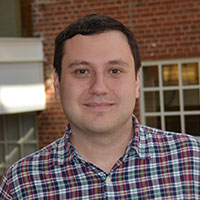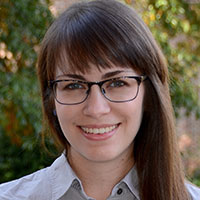Study examines the state of health research as seen in social media
June 19, 2018
The increasing use of social media — such as Twitter and Facebook — has altered the landscape of news, including reports about health-related research. Evidence suggests that exposure to health information in traditional and social media may affect consumer health behaviors and knowledge. At times, researchers and journalists overstate science and health findings, which could have an impact on individuals’ health choices.
To better understand this issue, a multidisciplinary, multi-university team, led by Noah Haber, ScD, postdoctoral scholar at UNC’s Carolina Population Center, investigated the state of causal inference in health research in social media. The team’s study, “Causal language and strength of inference in academic and media articles shared in social media (CLAIMS): A systematic review,” was published May 30 in PLOS One.
Haber’s faculty preceptor is Audrey Pettifor, PhD, professor of epidemiology at the UNC Gillings School of Global Public Health and faculty fellow at the Carolina Population Center.
Three co-authors of the study are affiliated with the Gillings School – Alexander Breskin, PhD, postdoctoral scholar in epidemiology, and Elizabeth S. McClure, MS, and Elizabeth A. Suarez, MPH, epidemiology doctoral students. Michael Webster-Clark, PharmD, also a doctoral student in epidemiology, was a member of the research team.
Using a database that tracks how people engage across social media, the team looked at the 50 most-shared academic articles associating any exposure with a health outcome in 2015, as well as the media stories that covered those articles. The researchers designed and utilized a review tool that assessed and summarized the studies’ strength of causal inference. They then compared those studies with the strength of causal language used to describe results in both academic and media articles.
“By aligning the language used by researchers and journalists with the strength of study results, we can help research consumers devote their limited time and energy to things that really will help improve health,” said Breskin.
The study found that 34 percent of the academic studies and 48 percent of the media articles they reviewed used language that reviewers considered too strong for their strength of causal inference. In addition, 58 percent of media articles were found to have inaccurately reported the question, results, intervention or population of the academic study. The team now is studying ways that academia, media and social media contribute to this issue and examining interventions to help fix the problem.
“The new landscape of science and media requires us as researchers, journalists and consumers to be critical of ourselves and willing to experiment with new models of science, from research creation to consumption,” Haber said.
To help disseminate study results, the researchers developed a website that features an explanation of the research, the full dataset and protocol, review tool, analysis code, reviewer profiles and results from the study.
Contact the Gillings School of Global Public Health communications team at sphcomm@listserv.unc.edu.



